
City life and small space life go hand in hand. Making small spaces work for urban families takes creativity, flexibility, and—depending on where you live—some pushing against the status quo. If you have more than one child and have lived in the city for some time, you’ve probably heard the comments: “When are you getting a bigger place? Are you planning to move to the suburbs now? Where do you keep everything? The kids will need more ___.”
It’s not easy pushing against the messages of more, bigger, and better but we know many city families who are choosing to live in small spaces for as long as possible and see lifelong benefits for doing so. Yes, even with kids. LaTonya Yvette, a mother of two children living in Brooklyn, writes that she sometimes finds herself “in rare and awkward conversations” when well-meaning friends ask when or if she is planning to move to a bigger space so each child could have a separate room.
“When we moved in to our current apartment, I immediately started to imagine how the space would work for the kids when they’re teenagers. ‘They will grow up here!’ I would say. . .But maybe I had it all wrong?
“I entertained three bedroom conversations for a while, [but] I had to intentionally recenter myself with what I know to be true: Everything is enough.”
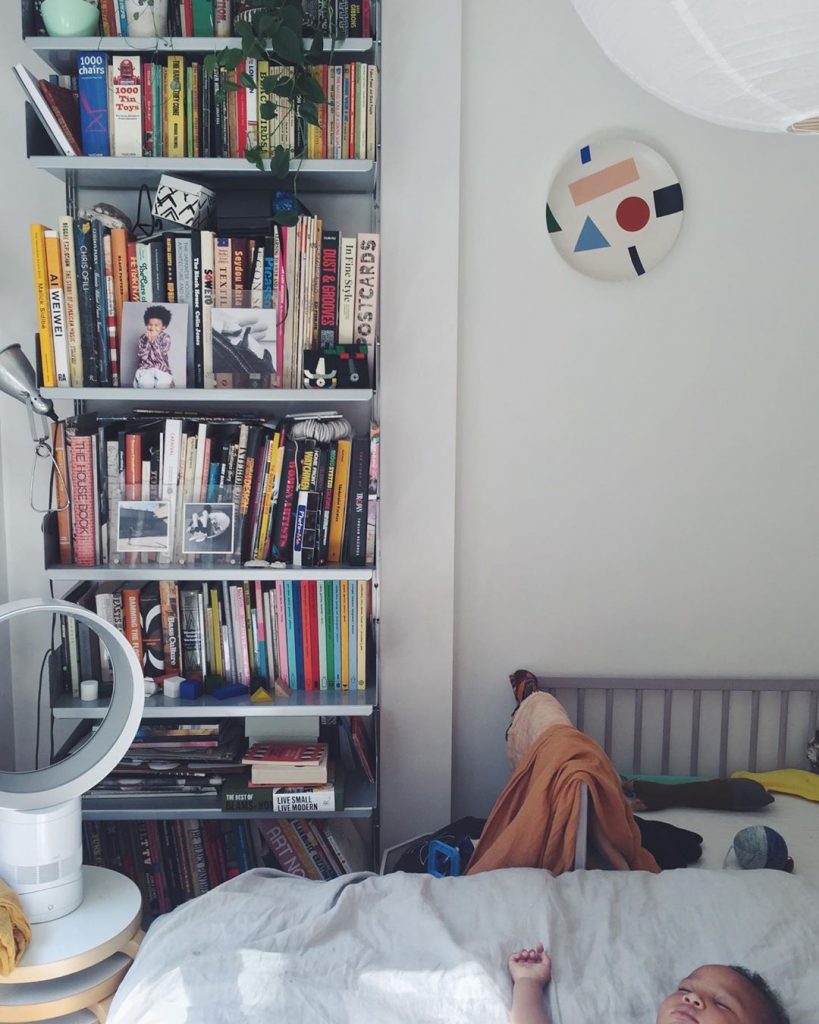
LaTonya is right—most often, what we already have is enough for what we need. Rather than grappling for more, what if we attempted to be more creative with the space we have? Shared kids rooms are a perfect example. Room sharing might be tricky to navigate and, yes, there will be sacrifices, but most of us wish for our kids to grow up to become kind-hearted community members. Their first community is the bedroom they share with siblings!
When it comes to shared kids rooms, there are a few things that make the space-sharing simpler and more efficient. We’re always collecting examples of small space living and are keeping tabs on what works and what doesn’t for shared bedrooms. Here are the most obvious room sharing hacks for bedrooms and families of any size.
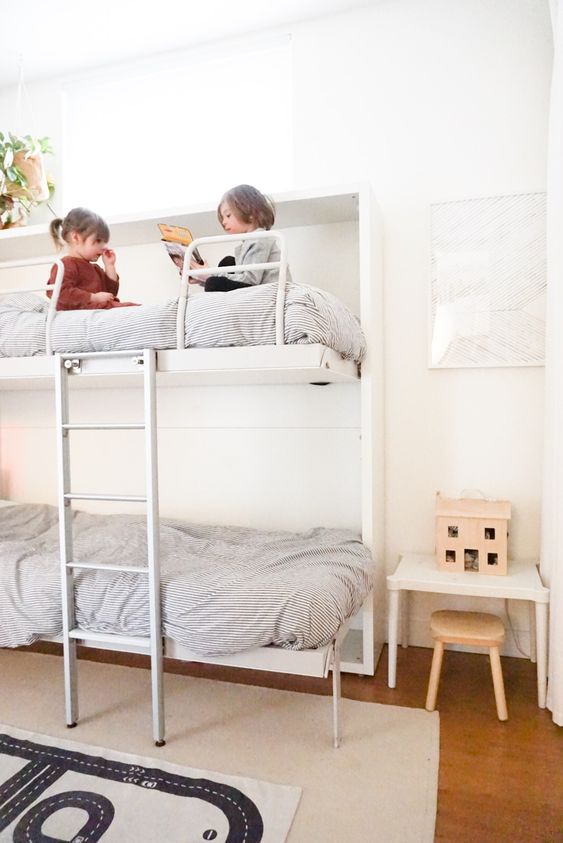
Vertical beds
Bunk beds are the most common variety of vertical beds, but no matter how you accomplish it, leaving the most floor space free and open will make the room feel larger. There’s a neutral IKEA bunk bed that shows up everywhere (you know the one). Keep in mind, a lower bottom bunk means the top bed won’t feel too high for younger kids. Some models even have the bottom bunk at floor level. If you need lots of sleeping space there are plenty of examples of bunk beds being doubled up and arranged in a corner to sleep four kids.
Wall beds are another great idea for keeping floor space at a maximum, and you get bonus points if the beds are foldable. Alison of 600sqft And A Baby is a master of small space living and uses foldable wall beds for her two children with great success. Trundle beds, while not vertical, are another good option for maximizing sleeping area when needed and pushing the bed away when it’s time to play.
Space for play
Your child’s bedroom isn’t just for sleeping. Kids also play, read, make art, create inventions, birth ideas, and make memories in their room. Just think of your childhood bedroom—no matter the size or style, it was home base for the most formative years of your life. Your kids will have the same experience, and you’ll want to give them space for doing their favorite activities, whether it’s building train tracks, designing skyscrapers, taming unicorns, or conquering evil villains. Vertical beds will do most of the work for you in keeping floor space available, and a cushy rug won’t hurt either.
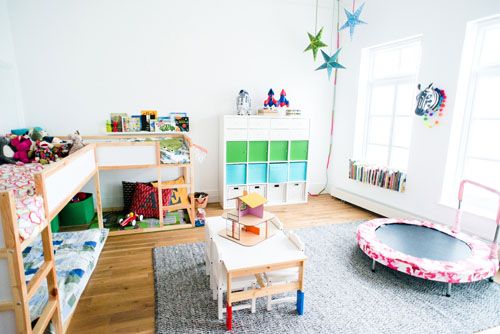
Toy storage
Storing toys is an ever-evolving challenge. Some kids (and parents) love organization and others are comfortable with big bins to toss everything in. No matter which works for your family, containers for toys will do just that—contain them. That lineup of stuffed animals or toy trucks might look picture-perfect when you first arrange them, but if they’re sitting directly on the floor they simply won’t stay put. Shelves, bins, drawers, or baskets that gives each item a home works best.
Underbed storage
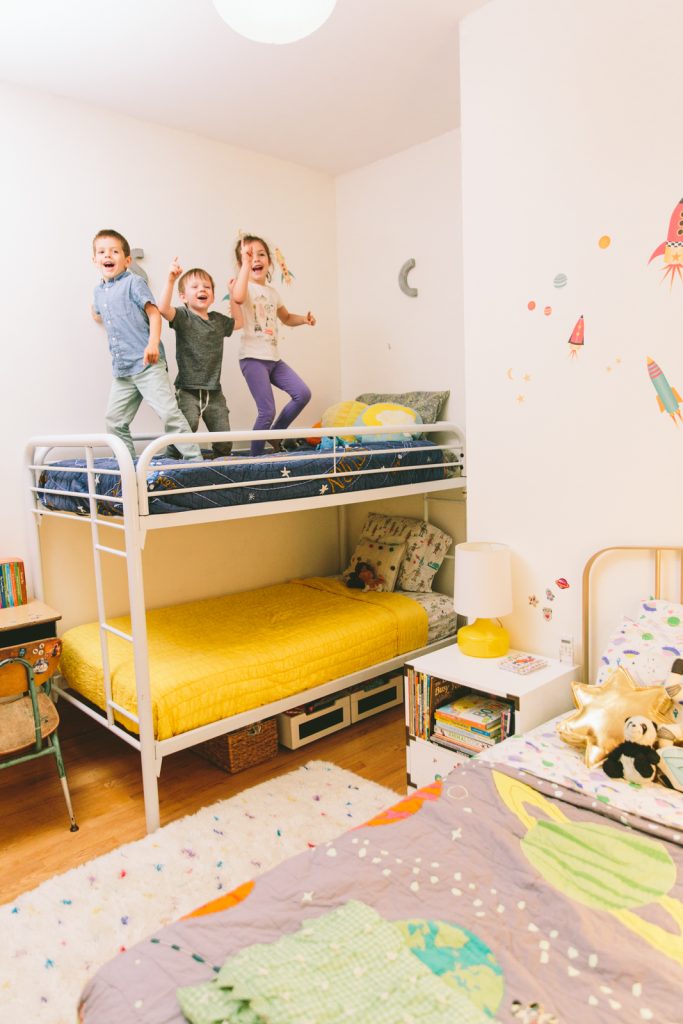
If the bed in your children’s room is stationary and has some space underneath, use it! There are a wide variety of under bed storage containers available. Use the space under beds for seasonal clothes, extra linens, or other things you don’t need to use very often.
Get creative with the rest of the space for extra storage too. Install shallow book shelves behind the door or mount a high shelf for lesser-used items or displays. If you’ve got the resources or know-how, there’s a wealth of inspiration for built-in cabinets, storage space surrounding an alcove bed, or a full wall of cubbies.
Personality
Just because your kids have a small, shared room doesn’t mean it has to be boring. Giving the decoration some thought and allowing your kids to express their individual personalities can help them feel like they have a space of their own, no matter how small. Display artwork or paint the walls a favorite color. Find some colorful removable wallpaper to add interest. Fill the shelves with books or meaningful objects to help the room feel cosy and inspiring.
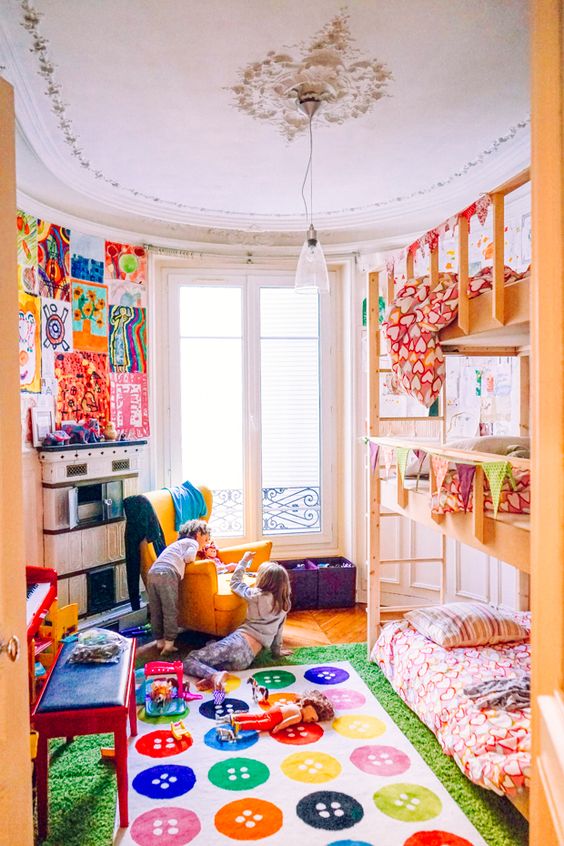
White paint is prevalent in small spaces for its ability to make rooms feel bigger and more open, and your space might need it. Add color with bedding or light fixtures, and you can always throw conventional wisdom into the wind and use a dark or bold wall color. It’s a bedroom after all, and meant to be cozy!
Constantly Evolving
No matter the number of bedrooms or total square footage, ask most families living in small spaces and they’ll all agree with one thing: home is constantly evolving. It’s most obvious with the addition of a family member, but the need for rethinking a space comes at other times too: when the play kitchen is outgrown or a budding artist needs a desk. Let the space in your home work for you—not against you—by allowing change and rearranging the furniture from time to time.
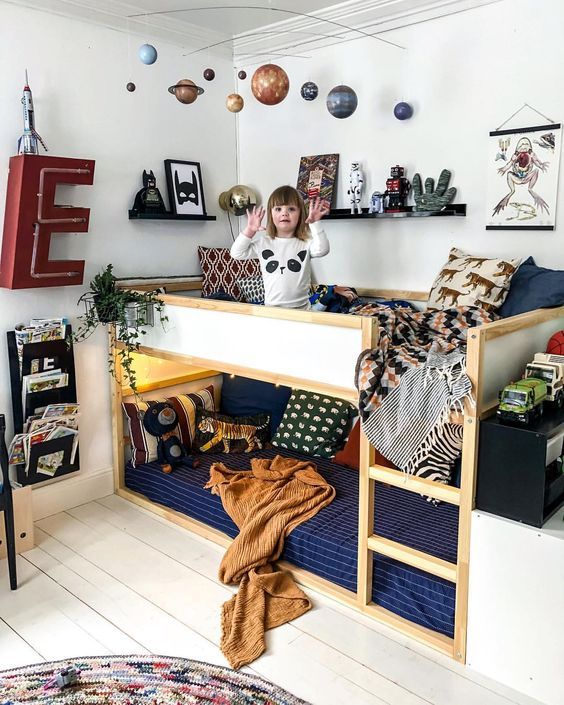
You’ll know when the bedroom—or any room—is no longer functioning in a way that best serves your family’s evolving needs. When that feeling comes, instead of jumping to conclusions like searching for a bigger space or leaving the city altogether, try using some creativity instead. Look for inspiration from other families who are making small spaces work beautifully, not begrudgingly. Give it some time; maybe your lifestyle has changed and your living space can be rearranged to fit.
Remember that in most situations, everything you have is already enough.
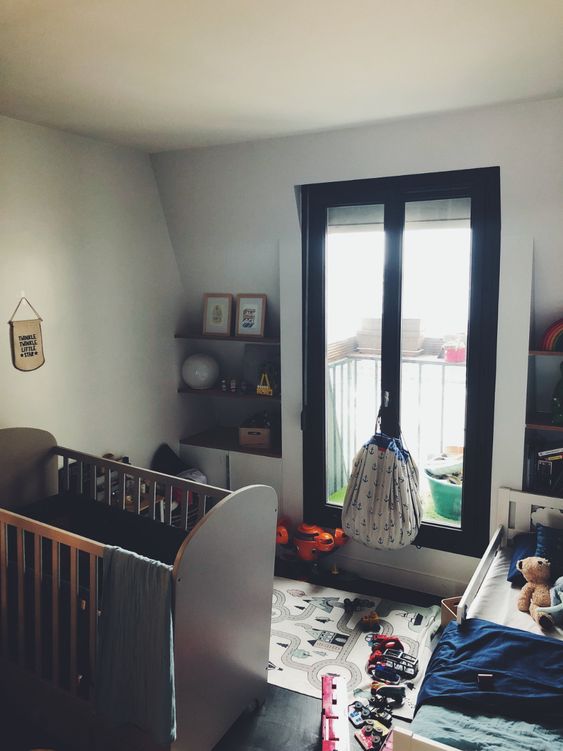
Need more inspiration for shared spaces? We’ve got you covered on Pinterest with our boards for small space living and shared kids rooms.
